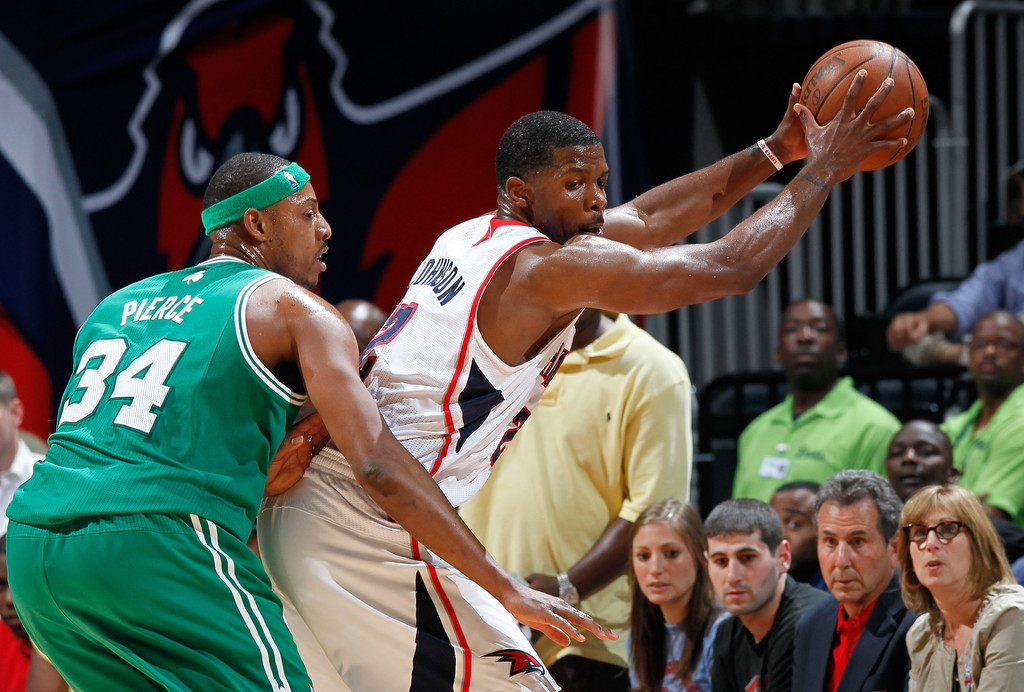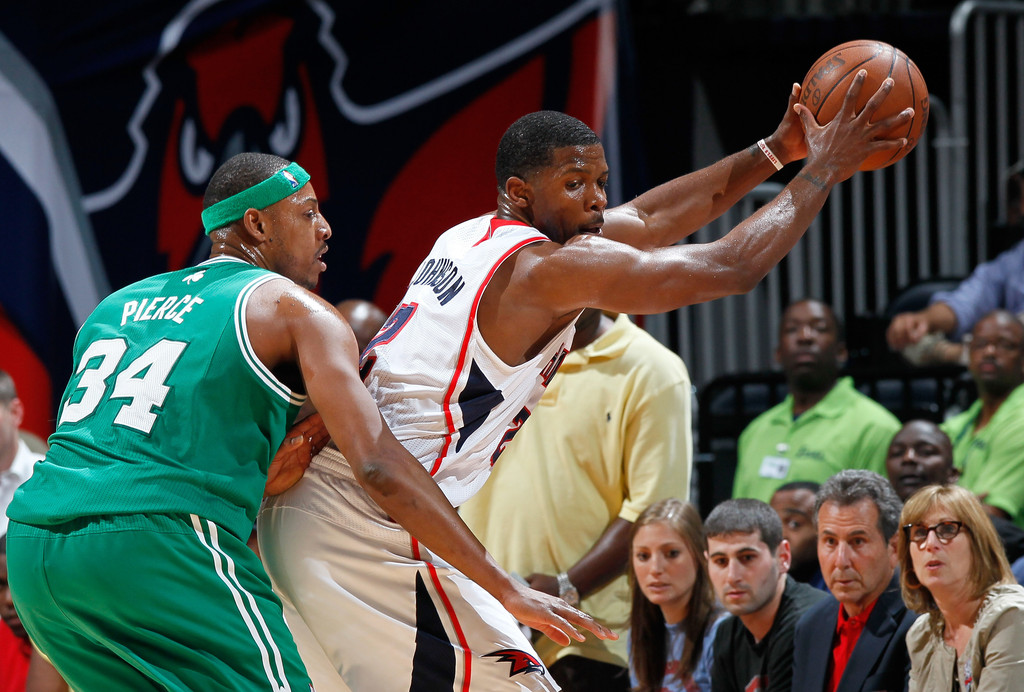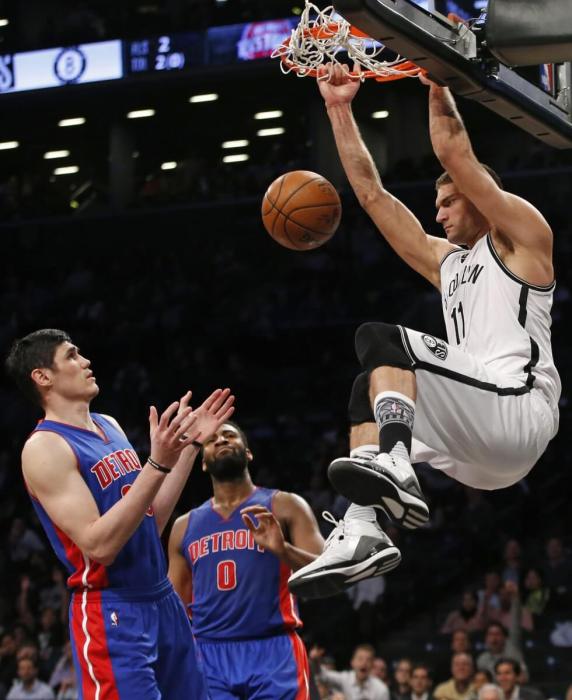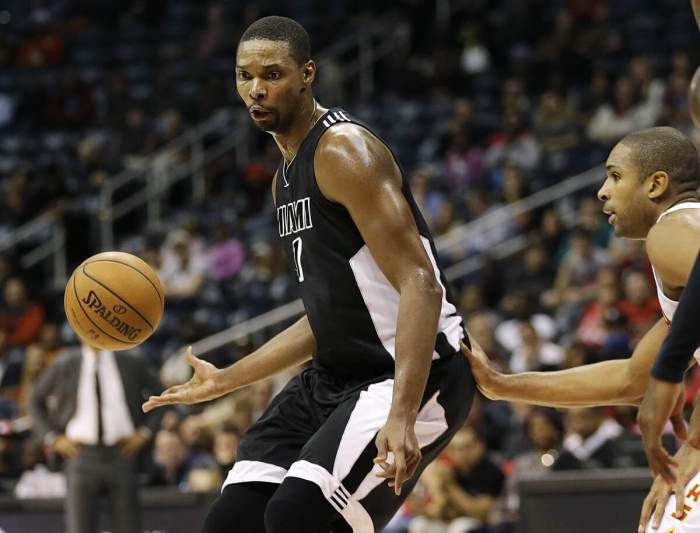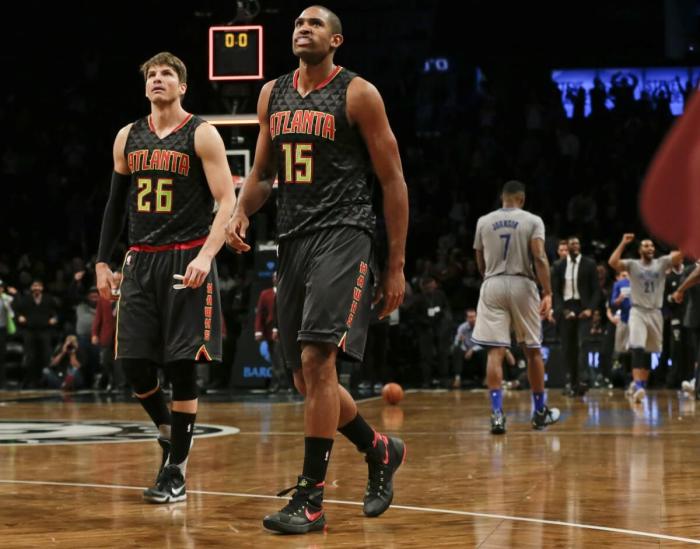Welcome to day three of Joe Johnson Week.
You don’t need a deep scan to know that the Nets were bad in 2011-12. One of the biggest reasons for their inability to do, well, much of anything, was their propensity for turnovers: the Nets turned the ball over on 16.1% of possessions this past year, tied for eighth-worst in the league. Conversely, the Hawks were the sixth-best team at limiting turnovers, turning the ball over on only 14.8% of their possessions.
One of the biggest reasons for this difference is Joe Johnson. Johnson turned the ball over on just 10.3% of his logged possessions, the second-lowest among guards with at least his usage rate (24.9) in 2011-12. But more important, and more staggering, is Johnson’s impact on team turnovers. With Joe Johnson on the floor, the Hawks turned the ball over just 13.6% of the time, a number that would rank the Hawks second overall in the NBA. With Johnson off the floor, the Hawks turned the ball over 17.1% of the time, which would rank them worst. In a 90-possession game, that’s a difference of about three turnovers turning into field goal attempts or free throws.
Herein lies the heart of Joe Johnson the basketball player: he predicates his game on what he knows he can do, rather than stretching the boundaries of what he can’t. He’s in control: of the ball, of the play, of himself. This comes from Johnson’s smart, efficient, underwhelming (okay fine, slow and boring) style of play, primarily through spot-ups, post-ups, and yes, isolations.
The Iso is a routinely criticized play (by lots of smart people and myself), and for good reason; it’s a one-man, often poor-percentage chance at scoring. But Joe Johnson’s approach to isolations doesn’t fall in line with that conventional wisdom. His isolations aren’t a result of forcing the issue, they’re a result of controlling it. When in isolation, Johnson chooses more often than not to pull up for a jumper or floater before getting to the rim. In 249 single-coverage isolation possessions in 2011-12, Johnson drove all the way to the rim less than 13% of the time, committed just 12 turnovers, and produced a PPP of 0.928 — putting him in the 86th percentile of the NBA.
That’s the Joe Johnson trade-off: fewer drives into the lane for the most high-percentage shots, but more shots at scoring overall. Below are some of Johnson’s isolations, and while they’re all in different situations, he approaches each one at his pace and only shoots once he’s found a sliver of an opening — which, at 6’8″, isn’t too difficult:
(Okay, I threw that last one in there because it’s awesome. Sue me.)
To be clear, I’m not saying the Nets should run an isolation-heavy offense centered on a ball-dominating Joe Johnson. In total, trotting out IsoJoe is a bad long-term play, more so when you consider the firepower he’s teamed up with. What I am saying is that Johnson’s isolations, unlike most, aren’t a result of poor offensive planning, and the result is fewer turnovers and more decent shots. In a more balanced offense that doesn’t rely on Johnson as the primary shot-creator, the ability to pick and choose better spots to get open shots in isolation could bolster his efficiency further, both shooting the ball and controlling it.
There is one place that turnover efficiency falters: when Johnson’s caught by a defense in the pick-and-roll. Even though Johnson turned the ball over just 10.3% of the time, that number jumped to 15.3% of the time as the pick-and-roll ballhandler, and over double that (35%) when faced with traps. In their playoff series against the Boston Celtics last season, coach Doc Rivers exploited that major weakness in the pick-and-roll, trapping him and forcing him to make a quick decision:
In all four examples, Boston traps Joe Johnson hard off the screen, the flustered Johnson passes out of the trap too quickly, and he throws the ball away. Facing Kevin Garnett’s defensive skills is difficult for anyone, but even Ryan Hollins disrupted Johnson with the trap. Johnson’s issues with double-teams aren’t limited to pick-and-rolls; when a second defender committed to him in isolation, he turned the ball over almost 16% of the time and puts up a paltry 0.688 PPP, putting him in the bottom 17% of the league.
Even though Johnson struggled and the Nets do have pick-and-roll phenom Deron Williams, this doesn’t mean the Nets should abandon Johnson-led pick-and-rolls. But if the Nets want to make the pick-and-roll a focal point of their game next year, they should only do it with Johnson as the ballhandler if he develops an early chemistry with Brook Lopez. In 2009-10, Johnson was one of the most efficient players in the NBA as a pick-and-roll ballhandler, shooting 54% from the floor and turning the ball over a more respectable 11.6% of the time in pick-and-roll situations. It’s possible that missing Al Horford for 55 games last year hurt his efficiency as a pick-and-roll player, but it’s also possible that age is beginning to affect his abilities. Since Johnson is not a player whose game relies on the wonders of youth, I’m optimistic for the former.
Statistical support for this story was provided by Synergy Sports Technology and NBA.com.

